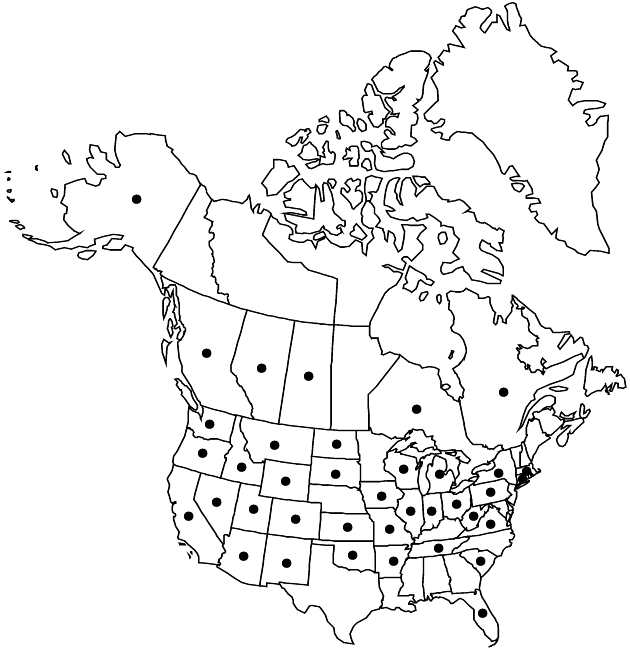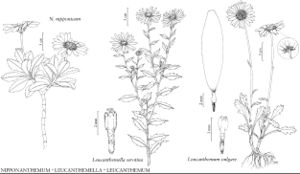Difference between revisions of "Leucanthemum vulgare"
Fl. Franç. 2: 137. 1779.
imported>Volume Importer |
imported>Volume Importer |
||
| Line 66: | Line 66: | ||
|publication year=1779 | |publication year=1779 | ||
|special status=Introduced;Illustrated | |special status=Introduced;Illustrated | ||
| − | |source xml=https:// | + | |source xml=https://bitbucket.org/aafc-mbb/fna-data-curation/src/2e0870ddd59836b60bcf96646a41e87ea5a5943a/coarse_grained_fna_xml/V19-20-21/V19_976.xml |
|tribe=Asteraceae tribe Anthemideae | |tribe=Asteraceae tribe Anthemideae | ||
|genus=Leucanthemum | |genus=Leucanthemum | ||
Latest revision as of 19:57, 5 November 2020
Perennials, 10–30(–100+) cm. Stems simple or distally branched. Basal leaves: petioles 10–30(–120) mm, expanding into obovate to spatulate blades 12–35(–50+) × 8–20(–30) mm, margins usually pinnately lobed (lobes 3–7+) and/or irregularly toothed. Cauline leaves petiolate or sessile; blades oblanceolate or spatulate to lanceolate or linear, 30–80+ × 2–15+ mm, margins of mid-stem leaves usually irregularly toothed proximally and distally. Involucres 12–20+ mm diam. Phyllaries (the larger) 2–3 mm wide. Ray florets usually 13–34+, rarely 0; laminae 12–20(–35+) mm. Ray cypselae 1.5–2.5 mm, apices usually coronate or auriculate. 2n = 18, 36, 54, 72, 90.
Phenology: Flowering spring–fall.
Habitat: Disturbed places, meadows, seeps, clearings
Elevation: 0–2000 m
Distribution

Introduced; Alta., B.C., Ont., Que., Sask., Alaska, Ariz., Ark., Calif., Colo., Conn., Fla., Idaho, Ill., Ind., Iowa, Kans., Mass., Mich., Mo., Mont., Nev., N.Mex., N.Y., N.Dak., Ohio, Okla., Oreg., Pa., S.C., S.Dak., Tenn., Utah, Va., Wash., W.Va., Wis., Wyo., Europe, widely adventive.
Discussion
Some botanists (e.g., W. J. Cody 1996) have treated Leucanthemum ircutianum de Candolle, with blades of mid and distal cauline leaves oblong to oblong-lanceolate and not ± pinnate at bases, as distinct from L. vulgare.
Selected References
None.
